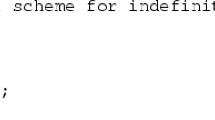Abstract
In this paper we investigate the structure of a two ball trust region subproblem arising frequently in nonlinear parameter identification problems and propose a method for its solution. The method decomposes the subproblem and allows the application of efficient, well studied methods for the solution of trust region subproblems arising in unconstrained optimization. In the discussion of the structure we focus on the case where both constraints are active and on the treatment of the unconstrained problem.
Similar content being viewed by others
References
H.T. Banks and K. Kunisch,Estimation Techniques for Distributed Parameter Systems (Birkhäuser-Verlag, Boston, Basel, Berlin, 1989).
M.R. Celis and J.E. Dennis, Jr. and R.A. Tapia “A trust region strategy for nonlinear equality constrained optimization,” in: P.T. Boggs, R.H. Byrd and R.B. Schnabel, eds.,Numerical Optimization (SIAM, Philadelphia, 1984) pp. 71–82.
J.E. Dennis, Jr. and R.B. Schnabel,Numerical Methods for Nonlinear Equations and Unconstrained Optimization (Prentice-Hall, Englewood Cliffs, N.J., 1983).
P.C. Hansen, “Truncated SVD solutions to discrete ill-posed problems with ill-determined numerical rank,”SIAM Journal on Scientific and Statistical Computations 11 (1990) 503–518.
J.J. Dongarra, J.R. Bunch, C.B. Moler and G.W. Stewart,LINPACK User's Guide (SIAM, Philadelphia, 1979).
R. Fletcher,Practical Methods of Optimization, 2nd edition (John Wiley & Sons, New York, 1987).
G.H. Golub and C.F. van Loan,Matrix Computations, 2nd edition (The John Hopkins University Press Baltimore, 1989).
M. Heinkenschloss, “Mesh independence for nonlinear least squares problems with norm constraints,”SIAM Journal on Optimization 3 (1993) 81–117.
M. Heinkenschloss, “Gauss—Newton methods for infinite dimensional least squares problems with norm constraints,” Ph.D. Thesis, Universität Trier (1991).
O.L. Mangasarian, “Solution of the symmetric linear complementarity problem by iterative methods,”Journal of Optimization Theory and Applications 22 (1977) 465–485.
J.M. Martinez, “Local minimizers of quadratic functions on Euclidean balls and spheres,”Siam Journal on Optimization 4 (1994) 159–176.
J.J. Moré, “The Levenberg—Marquardt algorithm: implementation and theory,” in: G.A. Watson, ed.,Numerical Analysis, Proceedings, Biennial Conference, Dundee 1977 (Springer Verlag, Berlin, 1977) pp. 105–116.
J.J. Moré, “Recent developments in algorithms and software for trust region methods,” in: A. Bachem, M. Grötschel and B. Korte, eds.,Mathematical Programming, The State of The Art (Springer Verlag, Berlin, 1983) pp. 258–287.
J.J. Moré and D. Sorensen, “Computing a trust region step,”SIAM Journal on Scientific and Statistical Computations 4 (1983) 553–572.
S. Omatu and J.H. Seinfeld,Distributed Parameter Systems. Theory and Applications (Oxford University Press, Oxford, 1989).
C.C. Paige, “Bidiagonalization of matrices and solution of linear equations,”SIAM Journal on Numerical Analysis 11 (1974) 197–209.
C.C. Paige and M.A. Saunders, “LSQR: An algorithm for sparse linear equations and sparse least squares,”ACM Transactions on Mathematical Software 8 (1982) 43–71.
J.-S. Pang, “Inexact Newton methods for the nonlinear complementarity problem,”Mathematical Programming (Series A) 36 (1986) 54–71.
J.-S. Pang, “More results on the convergence of iterative methods for the symmetric linear complementarity problem,”Journal of Optimization Theory and Applications 42 (1986) 107–134.
Ph.L. Toint, “Global convergence of a class of trust-region methods for nonconvex minimization in Hilbert space,”IMA Journal of Numerical Analysis 8 (1988) 231–252.
C.R. Vogel, “A constrained least squares regularization method for nonlinear ill-posed problem,”SIAM Journal on Control and Optimization 28 (1990) 34–49.
K. Williamson, “A robust trust region algorithm for nonlinear programming,” Report TR88-10, Dept. of Math. Sciences (Rice University, Houston, Texas, 1990, (revised May, 1991)).
Y. Yuan, “A dual algorithm for minimizing a quadratic function with two quadratic constraints,”Journal on Computational Mathematics 9 (1991) 348–359.
Y. Yuan, “On a subproblem of trust region algorithms for constrained optimization,”Mathematical Programming (Series A) 47 (1990) 53–63.
Y. Zhang, “Computing a Celis—Dennis—Tapia trust region step for equality constrained optimization,”Mathematical Programming (Series A) 55 (1992) 109–124.
Author information
Authors and Affiliations
Corresponding author
Additional information
The research of this author was partially supported bygottlieb-daimler andkarl-benz-stiftung, Ladenburg and NSF, Cooperate of Agreement No. CCR-8809615.
Rights and permissions
About this article
Cite this article
Heinkenschloss, M. On the solution of a two ball trust region subproblem. Mathematical Programming 64, 249–276 (1994). https://doi.org/10.1007/BF01582576
Received:
Revised:
Issue Date:
DOI: https://doi.org/10.1007/BF01582576



